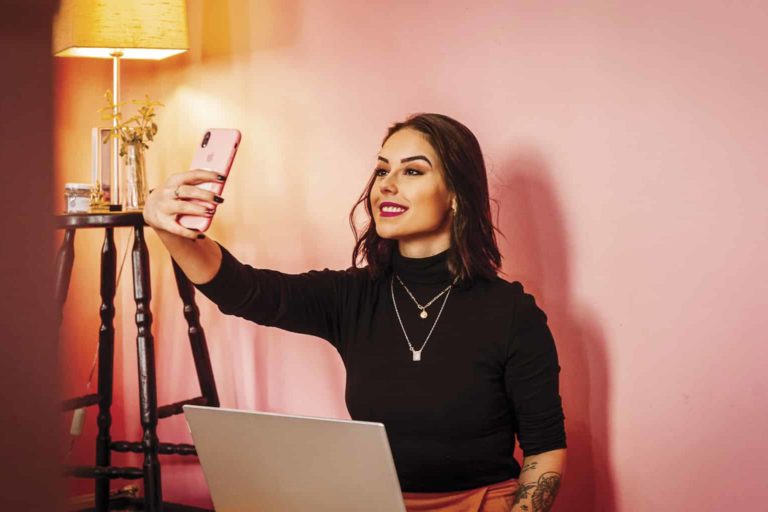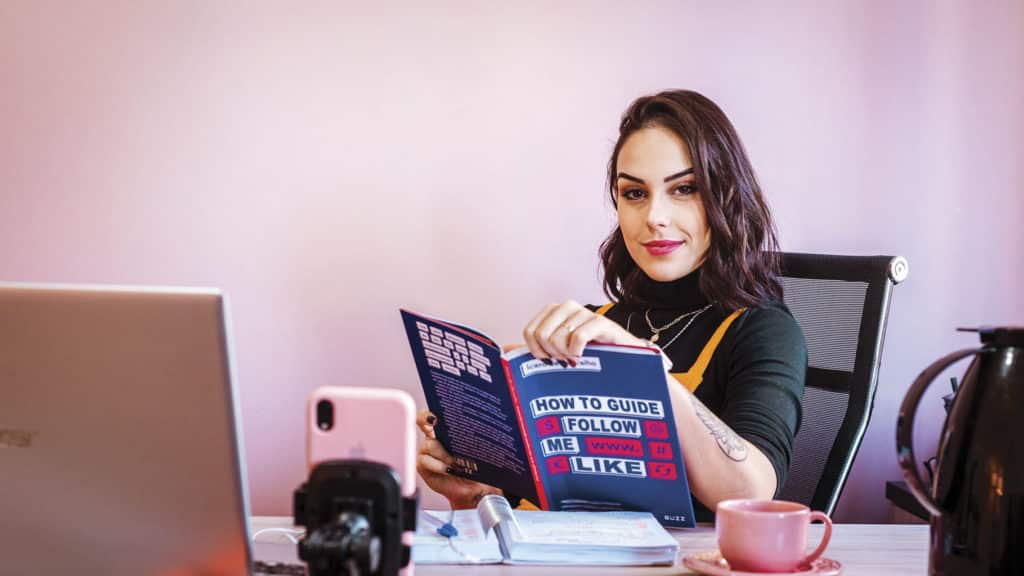BUSINESS
Influencer or influenza? Viral or virus?

WORDS: Olivia Walsh PHOTOGRAPHY Supplied
Depending on your viewpoint (typically dependent on when you were born), the rise and rise of social media spruikers is either a boon or a bane to society.
WITH the advent of Instagram, self-styled socialites, fashionistas and health and fitness gurus have become overnight celebrities, up there with actors, supermodels and sports stars.
Many who have built their seemingly lucrative ‘brands’ on the back of tens of thousands or even millions of followers appear to be famous for simply being famous, but remain unknown to the majority of those of a certain age who wonder what influencers actually do. Many hail from the Gold Coast, Australia’s unofficial influencer capital where Instagrammable beach backdrops and hip bars, cafes and restaurants pose as a (often heavily-filtered) social media dreamscape. Influencers such as Tammy Hembrow, with 14.5 million Instagram followers, are among the social media stars to call the Glitter Strip home.
Griffith University business student Olivia Walsh takes an in-depth look at the rise of influencers and whether they really are as influential as they would have us believe.
The cause to feel certain – so comes the rise of the Influencers
It’s difficult to believe, but ‘influencers’ date back to the 18th century, with the concept coming to fruition in 1760. To be influenced is to have a lasting aurora on the character, development or behaviour of someone or something or the effect itself. Simplistically spoken, some need more convincing than others. Yet, it becomes questionable as to how society has become practically dependent on strangers’ words and beliefs to contribute to the economy surrounding us. Many immediately connect the dots between an influencer and social media, yet such a notion stems far beyond a small-minded belief.
Pre social media emanated the infatuated image surrounding royals and celebrities who were poured into the media for everyday people to consume. It was the brand endorsements, the collaborations and the titles of their names that encapsulated the visual facets of the mind. This notion of ‘the influencer’ started long before we were watching a haphazard, blond hair, blue-eyed adolescent promoting her beloved perfume in two minutes for $200. As a society, the demand for re-enforcement via the legitimacy of others’ words has paved the way for humans to work in a world where a monetary benefit is awarded to articulate others to purchase. With emotional factors such as empathy, authenticity and sincerity driving the decision making for many, people seek to source validation through others’ purchase behaviours, which act as an emotional plea.
“… the rise of the influencer becomes even higher, as people start to class individuals as their online ‘friends and family’.”
Currently, a $13.8 billion industry, the influencer has not only risen, it’s dominating the marketing sector to extremes. However, influencing is a near zero-sum game. It’s impossible to predict how an audience will react to content. As reported by the Digital Marketing Institute, it was believed that in 2021, 49 per cent of consumers were dependent on the recommendations of others before committing to the purchase stage. While not all recommendations are said to be false, many do fall into categories of misleading or sprinkled with sugar to coat the impurities of the product or service being promoted.
Unfortunately, the more dependent humans become, similarly, the more cognitively declined a society walks this Earth. Consumers looking at a new moisturiser could flip the bottle around to read and research the listed ingredients, yet they value the word of a stranger exponentially more. With the human race enduring a global pandemic, many found themselves isolated, seeking to find an emotional connection. Let’s face it, even those of us who hibernate to extremes need social connection to regulate emotions and increase self-esteem. So, the rise of the influencer becomes even higher, as people start to class individuals as their online ‘friends and family’. Typically, to validate this connection many would immerse themselves in replicating influencer’s lifestyle patterns and purchase behaviours.
So how did we reach such an unvalidated point of purchase? Proven is the want to be liked and accepted, the desire to fit in and the conformity to a group of census with or without legitimacy. Following an influencer alongside four million others and owning or participating in the same origins of that individual arises the feeling of normality. However, how do you define normal? It’s impossible. Hence, we come back to the notion that influencing is a near zero-sum game. Depending on the perspective taken, influencers are becoming the non-factual Google. They are becoming the latest magazine and trending online shop. The gravitational pull these individuals and groups hold is the greatest buying power experienced in history.









